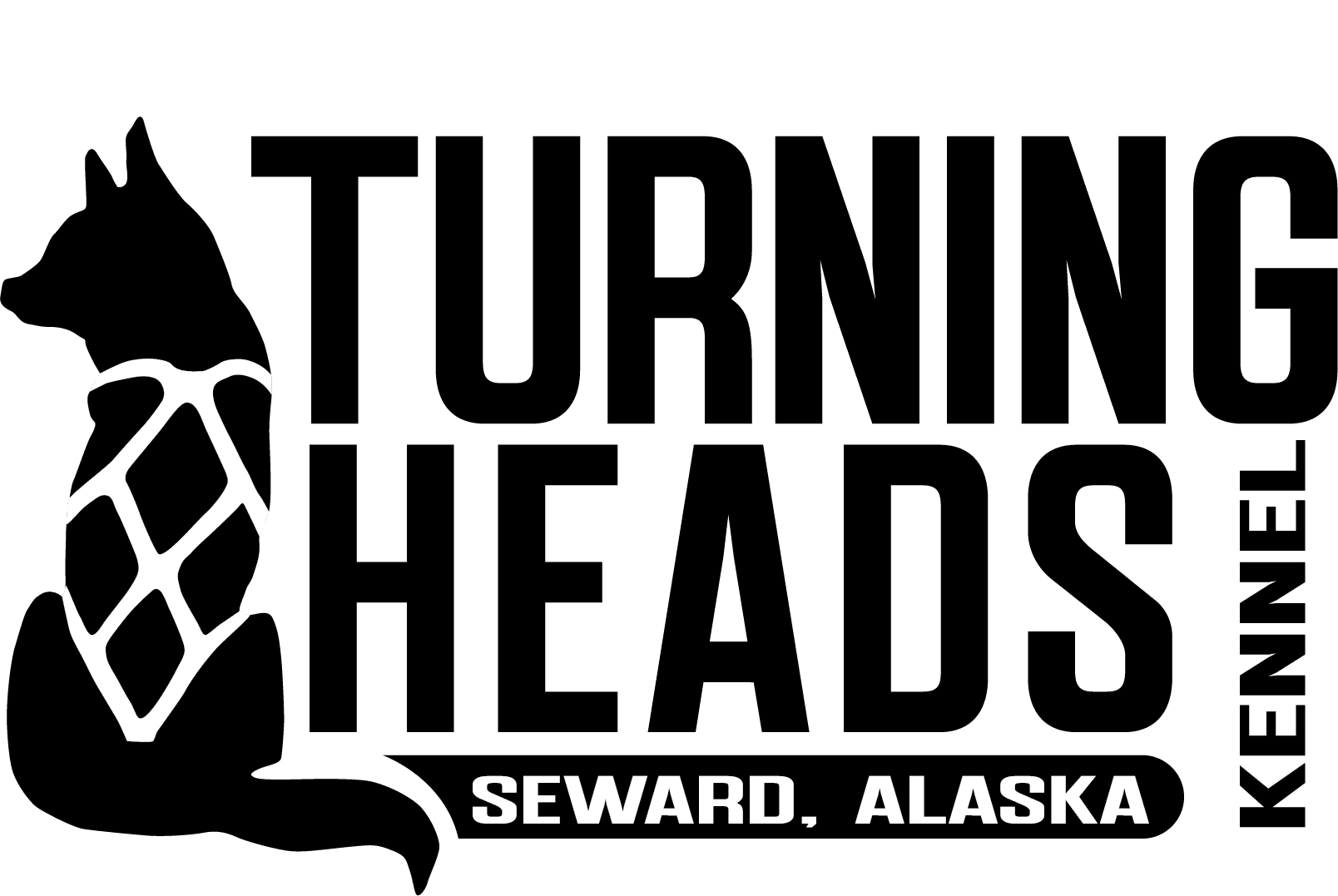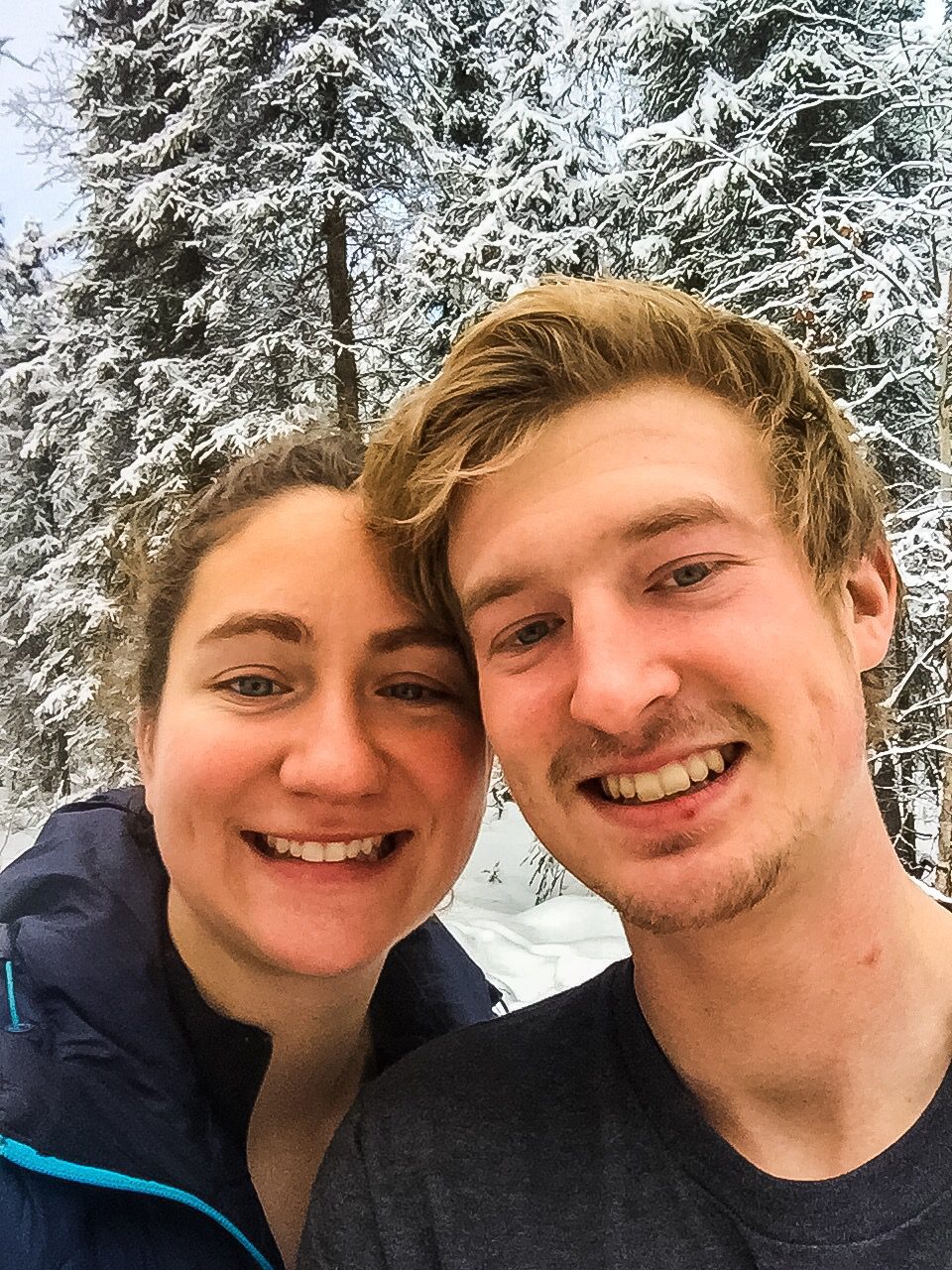When I went back home, my friends and family on the east coast thought it was both strange and fascinating that I had willingly adopted a lifestyle with no running water or no power. While I occasionally gripe about the inability to take a shower or other simple luxuries modern life affords most, I find myself not only content but quite happy.
Our days are full, often bursting at the seams as we find our dog runs stretching across the night. At home, life is simple. There is no television available. No phone constantly ringing. And getting on the Internet is a privilege rather than an expectation. Instead, we fill our time with what the day requires.
We chop meat. We get water to feed the dogs. To get water we have to hook our generator up to our well. It’s a bit of a process by most people’s standards but it isn’t hard to do. The most important part of it all is making sure we shut the water off properly so our well doesn’t freeze up. When we feed the dogs, we do it like all mushers, a 5 gallon bucket at the time. Right now we are feeding 2-3 times a day and it takes 8 buckets for the kennel.
After feeding the dogs, We make food for ourselves. We eat a lot of Mac and cheese, pancakes, and biscuits and gravy. It seems that bacon always finds a way into whatever we eat. I’m sure it isn’t healthy but the fat helps us stay warm in the cold.
We find that we spend a lot of time talking and playing cards when we aren’t in the dog lot. Our favorites are monopoly deal, cribbage and uno. We are creatures of habit and don’t change our routines much.
Quiet time is sudoku or reading books on dog mushing. The boys drink a lot of coffee together but I’m doing my best to abstain from caffeine so that it’ll have a bigger effect on me when I need it during races. I drink water and juice and this supplement I started on last summer called Plexus, which has done a surprisingly good job of keeping me in tip-top shape, gotten rid of the allergic reaction that has plagued my hands for years and well energized even on little sleep.
The days are wonderously simple. There is a certain beauty to their routine. Our cabin is small (14×20) and is home to 4 house dogs and 3 cats. Outside, we have our chickens who have adapted surprisingly well to the cold. Keeping everything maintained is a full time job. Charging our one battery so we have lights. Charging our phones so we can stay in touch. When the snow comes, Travis hopes in the side by side and plows.
On nights we are tired we turn the generator on and will use our laptop to watch movies. Last night we watched A Knights Tale even though we’d all already seen it. Most of our days echo the days before.
When my phone is charged, I find that the urge to write is what fills me the most. I want to share what we’ve done or accomplished — even if it isn’t much — because, in some small way, it helps us stay rooted to a world that we otherwise wouldn’t be a part of.
It is a fun life. A full life. There is something about working with a small group of people and dogs that makes what we do so satisfying.
Here are a few photos of the cabin:
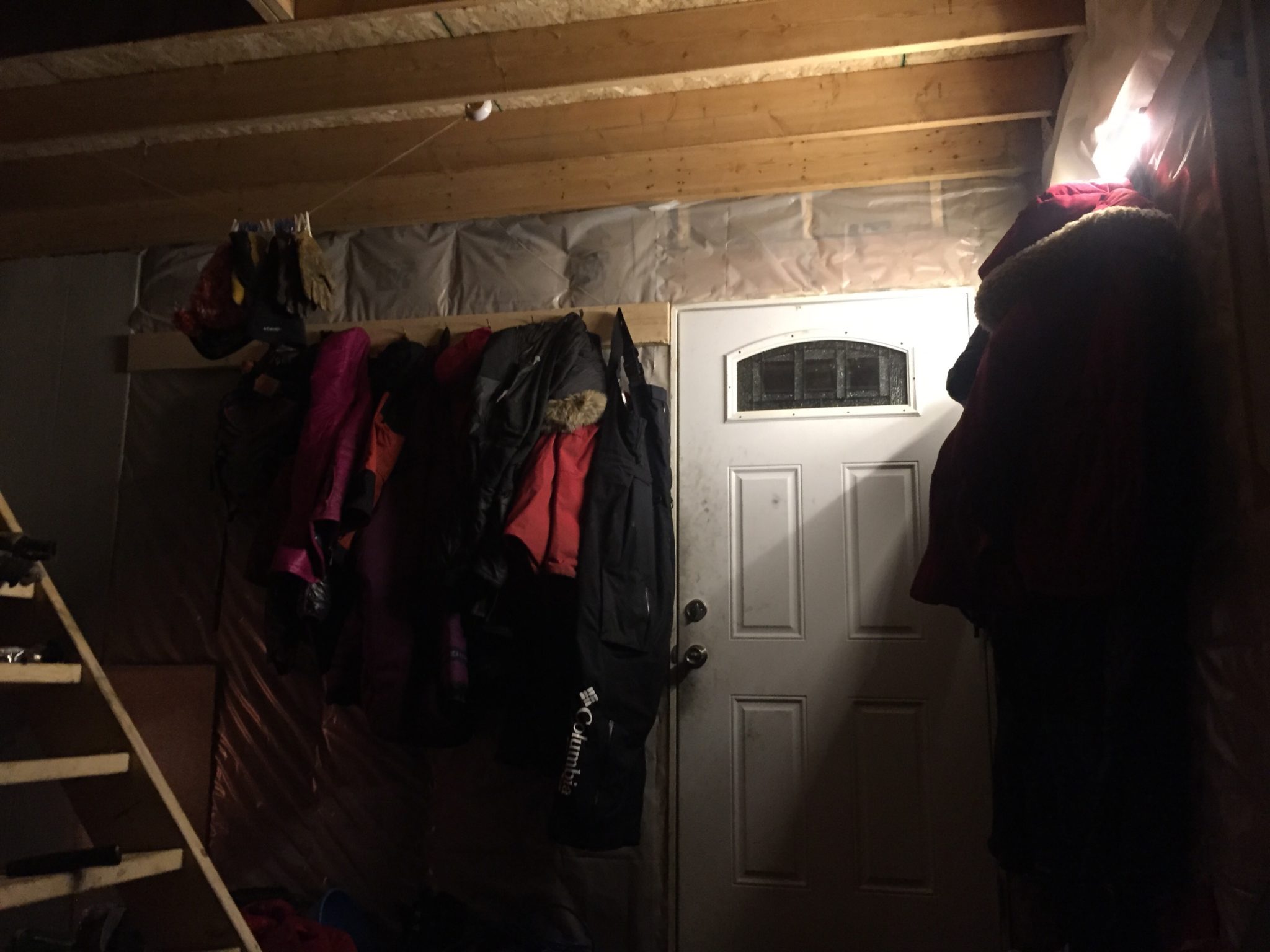
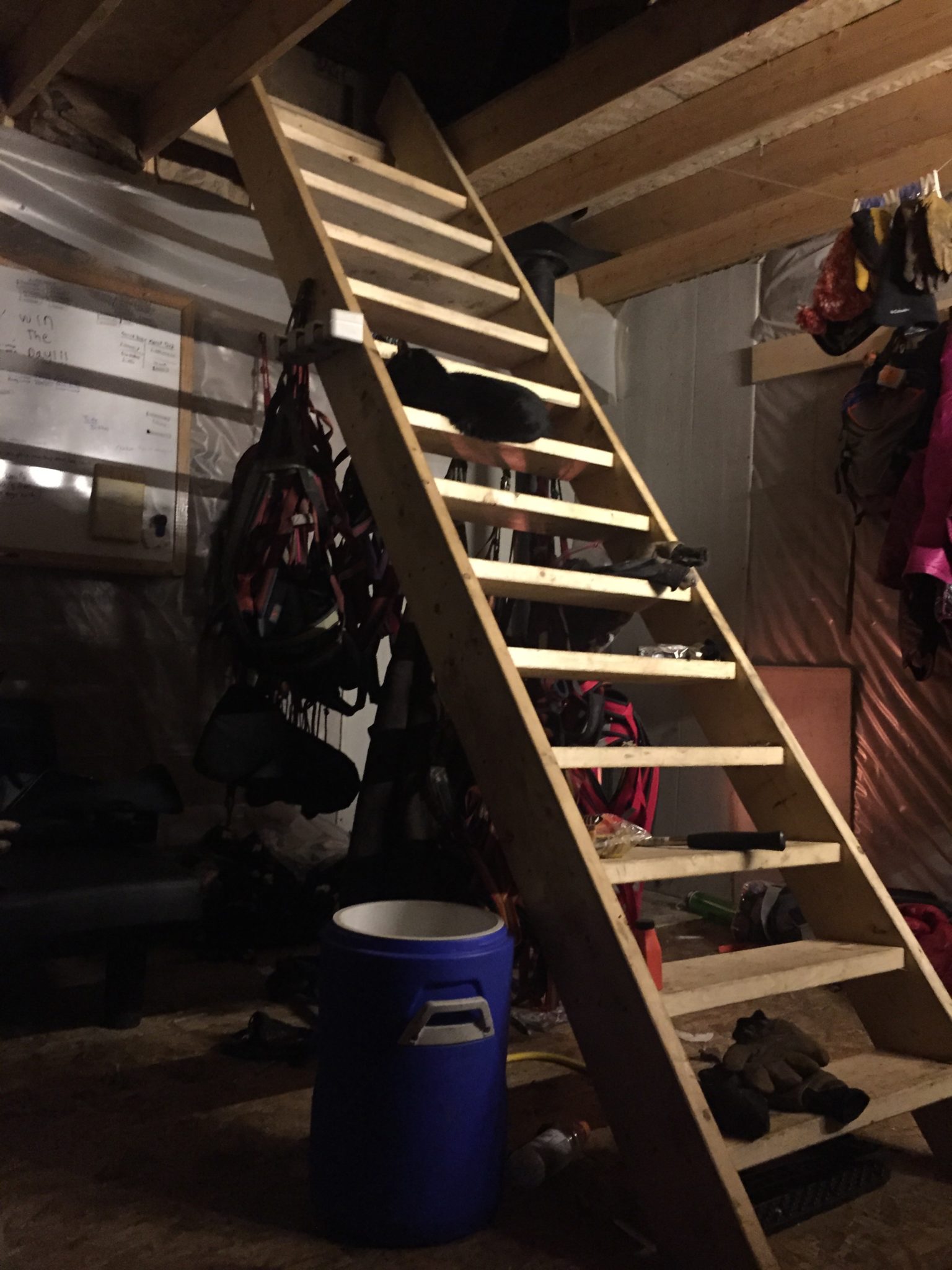
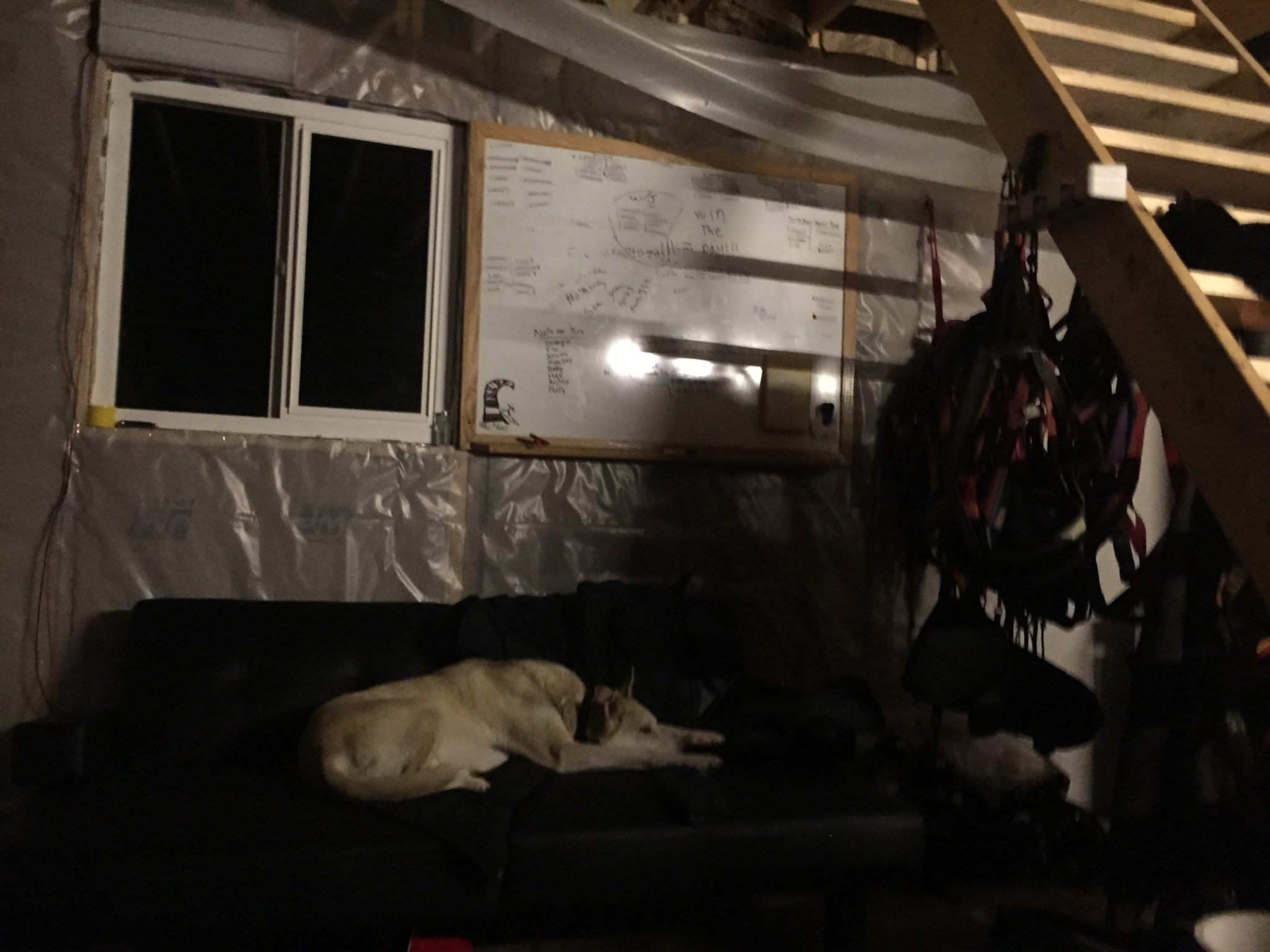
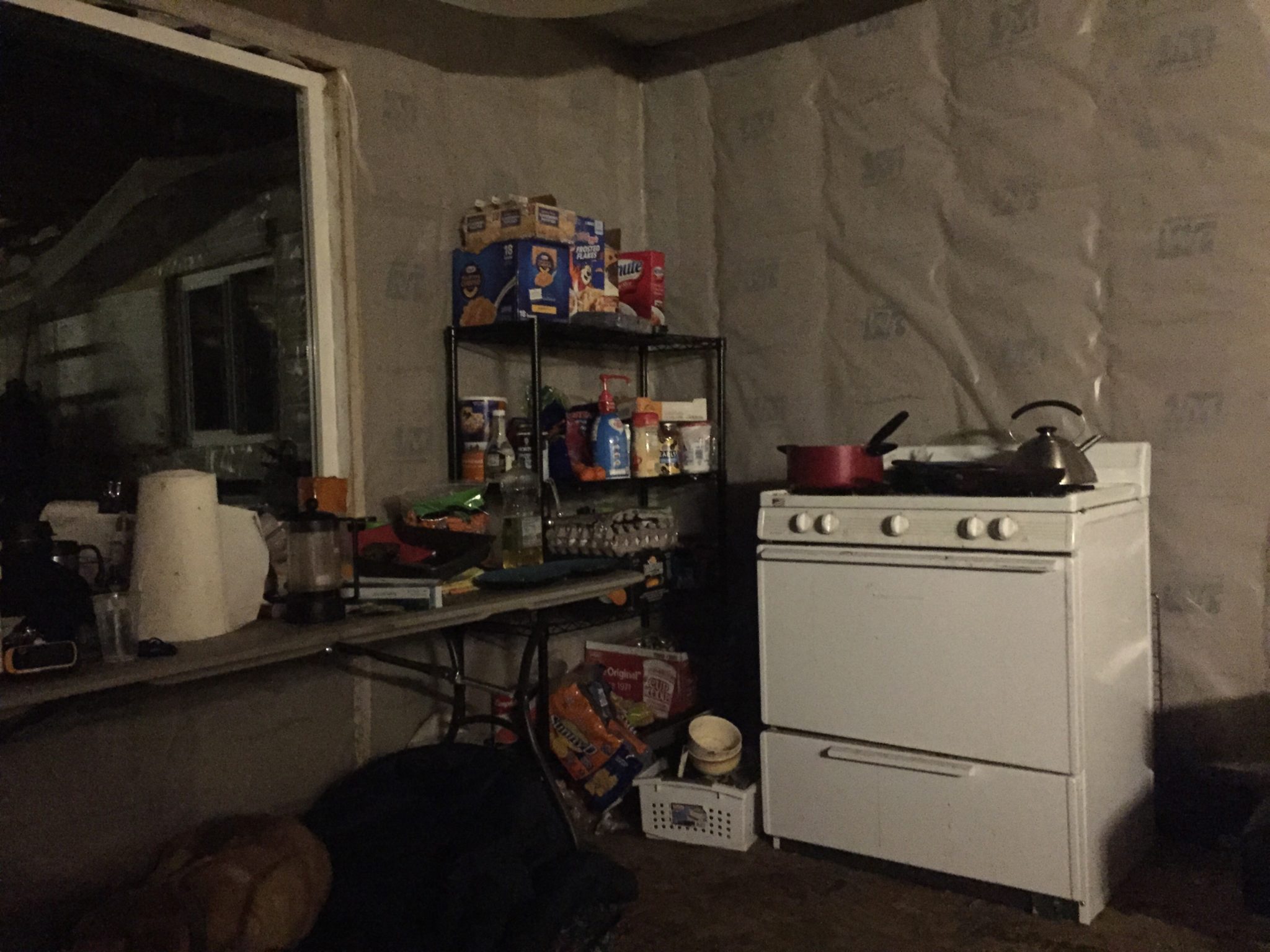
I’m sure our cabin doesn’t look like much, but to us it it paradise. It means we have trails out the door and we can do what we love. Staying organized is a challenge but we somehow manage. Simple things are still hard. It’s hard to want to leave and go into town and do things we need to: check mail, get caught up on emails, return phone calls. We do it, but we do it somewhat reluctantly because the desire to stay and run is so strong.
Unlike last year, running dogs is something that only requires going outside and hooking them up. No driving required!
Life is good
